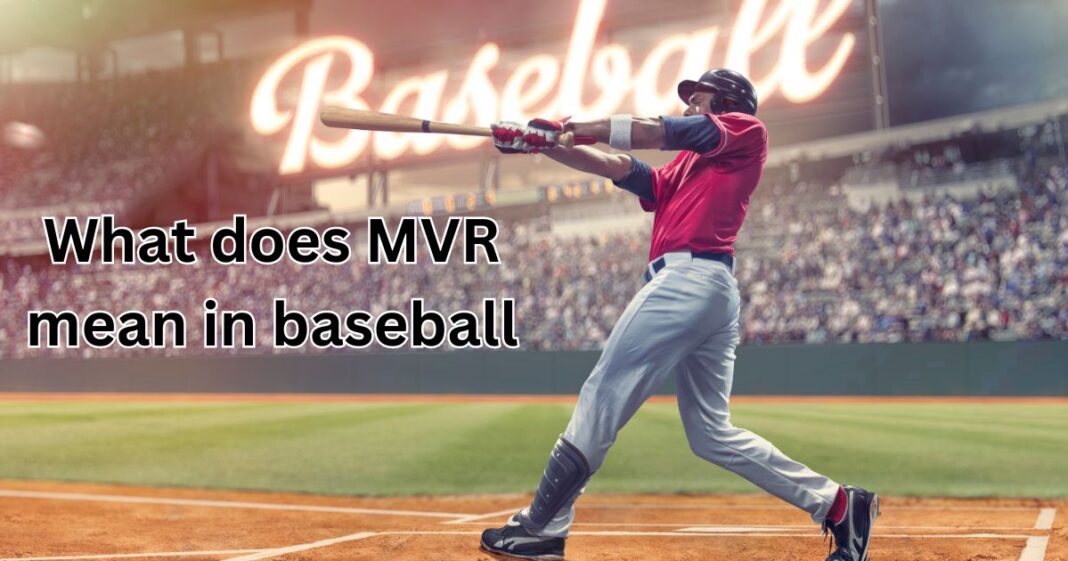Decoding MVR in Basebal
Baseball is a sport steeped in tradition, with a rich history and a deep well of statistical analysis that both fans and players rely on to understand the game better. Among the many terms and acronyms that have become part of the baseball lexicon, one that has garnered attention in recent years is “MVR.” While not as widely recognized as ERA (Earned Run Average) or RBI (Runs Batted In), MVR is an important metric in modern baseball, particularly in the context of pitching strategy and game management. But what exactly does MVR mean, and why is it significant?
What is MVR?
MVR stands for “Mound Visits Remaining.” It is a relatively new statistic introduced by Major League Baseball (MLB) as part of the 2018 rule changes aimed at speeding up the pace of play. The concept behind MVR is simple: it tracks the number of times a team can visit the pitcher on the mound during a game. Each time a manager, coach, or player (typically the catcher) visits the mound to talk to the pitcher, it counts as one mound visit.
The introduction of MVR was part of a broader effort by MLB to address concerns about the length of games, which had been steadily increasing over the years. By limiting the number of mound visits, the league hoped to reduce unnecessary delays and keep the game moving at a brisker pace.
The Rules Governing MVR
Under the current MLB rules, each team is allowed a maximum of five mound visits during a nine-inning game. If the game goes into extra innings, each team is granted one additional mound visit for every extra inning played. However, not all trips to the mound count against the MVR total. There are specific exceptions to the rule, including:
- Injury Visits: If a mound visit is made to check on an injured player, it does not count toward the MVR total.
- Pitching Changes: Visits made during a pitching change also do not count as a mound visit for the purposes of MVR.
- Cross-ups Between Pitcher and Catcher: If there is a clear miscommunication between the pitcher and catcher, leading to a cross-up in signals, a visit to clarify the signs does not count against the MVR.
The strategic implications of MVR are significant. Managers must carefully consider when to use their allotted mound visits, balancing the need to communicate with the pitcher against the risk of running out of visits in critical moments later in the game.
Strategic Importance of MVR
The introduction of MVR has added a new layer of strategy to baseball. Managers and coaches now have to be more judicious about when and why they visit the mound. In the past, frequent mound visits were used as a way to calm a pitcher, relay instructions, or even buy time for a reliever to warm up in the bullpen. With MVR in play, these visits have become more precious.
For example, a manager might hold off on visiting the mound early in the game, even if the pitcher is struggling, in order to preserve visits for later innings when the game might be on the line. Conversely, a catcher might choose to visit the mound to settle a young pitcher or to clarify signs in a high-pressure situation, knowing that such a visit could be crucial in preventing a costly mistake.
Impact on Pace of Play
One of the primary reasons for implementing the MVR rule was to speed up the game, and by most accounts, it has had the desired effect. Before MVR was introduced, games were increasingly bogged down by frequent mound visits, particularly in late innings when every pitch was critical. By limiting these visits, MLB has managed to shave off some of the dead time that often plagued games.
However, the impact of MVR on the pace of play is just one part of the equation. While the rule has helped to reduce game times slightly, it has also forced teams to adapt their in-game communication strategies. Teams now often rely more on pre-game planning and non-verbal communication between the pitcher and catcher to minimize the need for mound visits.
MVR and Fan Experience
For fans, MVR has brought a new element of suspense to the game. Watching a team manage its mound visits can be just as engaging as monitoring the pitch count or tracking a hitter’s performance. The tension builds as the game progresses and the number of mound visits dwindles, leaving both the players and fans wondering if a critical conversation might be missed because of the MVR limit.
Moreover, the introduction of MVR has sparked discussions among fans and analysts about the effectiveness of the rule and whether it has achieved its intended goals. Some argue that while MVR has helped to reduce game times, it has also placed additional pressure on pitchers and catchers to perform without the benefit of frequent in-game adjustments.
Conclusion
MVR, or Mound Visits Remaining, may not be the most glamorous statistic in baseball, but it has become an integral part of the modern game. By limiting the number of mound visits, MLB has introduced a new strategic element that requires careful consideration by managers, coaches, and players. As teams continue to adapt to this rule, it will be interesting to see how MVR influences pitching strategies and game outcomes in the years to come. For fans, MVR adds another layer of depth to the game, making each visit to the mound a moment of tactical significance.




